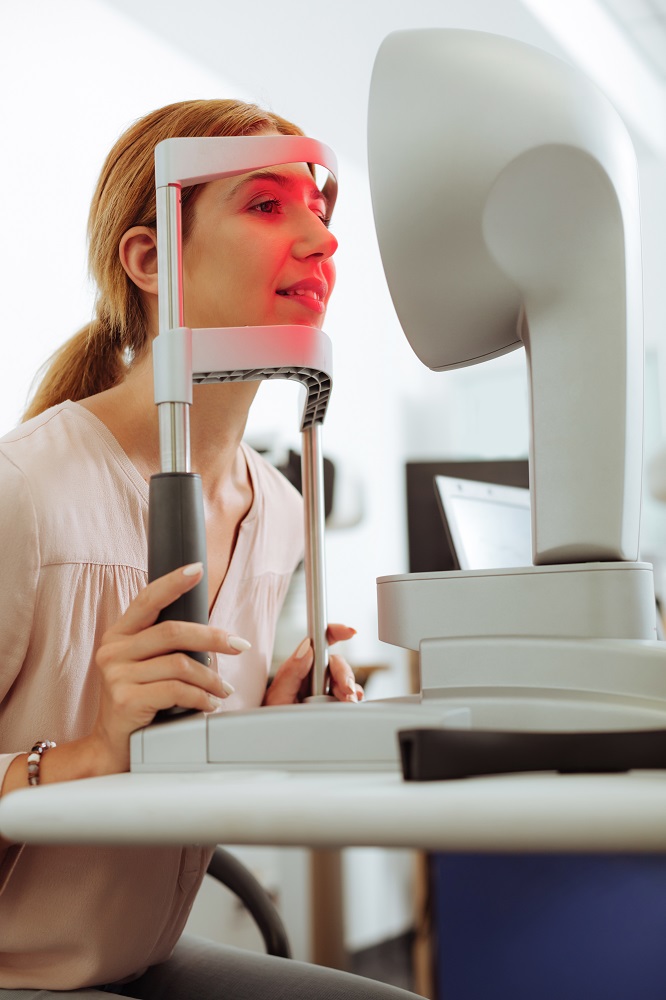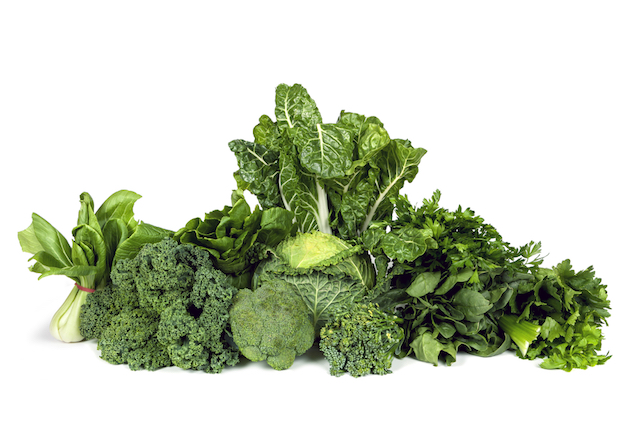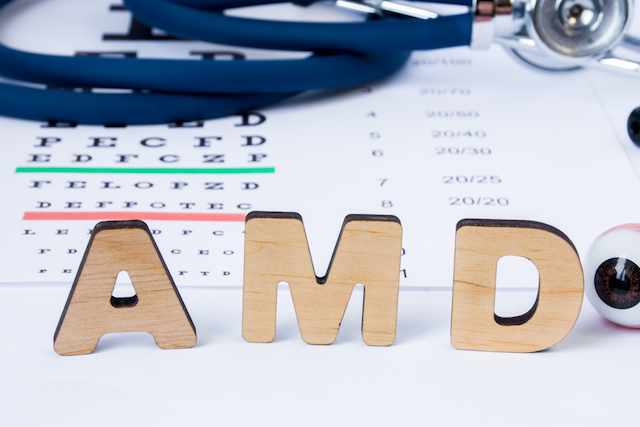Eat to beat Macular Degeneration and maintain your eye health

Macular degeneration, also known as age-related macular degeneration (AMD), is the name given to a group of eye diseases that cause progressive loss of central vision, leaving the peripheral or side vision intact. It appears not to be related to other eye diseases such as cataract, glaucoma or diabetic retinopathy. What can you do to prevent it? Take a look…
What is macular degeneration?
According to the Macular Disease Foundation, macular degeneration affects about one in seven Australians over the age of 50 and is responsible for around 50 per cent of all cases of blindness. It is the leading cause of legal blindness and severe vision loss in Australia. It affects your ability to read, drive, recognise faces and perform activities that require detailed vision.
So, just what is the macula?
The macula is the sensitive central part of the retina where light-sensitive cells send signals to the brain. It is a tiny part at the back of the eye that absorbs and neutralises damaging light rays. It allows us to see fine detail and is critical to our central vision, which is crucial to recognising faces, driving a car, reading a book, or doing close handwork.
With age, changes to the macular can result in blurred vision, straight lines appearing wavy and possibly a ‘dark’ area within our central vision.

What are the risk factors?
Exactly what causes macular degeneration is still not fully understood. However, there are four things that greatly increase your risk of getting it:
- Age
As you get older, your chances increase. People over the age of 50 are at greater risk of macular degeneration. Almost 15 per cent of Australians over 80 years have vision loss or blindness caused by age-related macular degeneration.
- Family history
People with a parent with macular degeneration have a 50 per cent chance of developing the disease.
- Smoking
People who smoke are three to four times more likely to develop macular degeneration. Smokers may also develop the disease five to ten years earlier than non-smokers.
- Lifestyle factors
People with high blood pressure, obesity, type 2 diabetes or high cholesterol are at greater risk.
How to avoid getting macular degeneration
- Avoid smoking
- Maintain a healthy weight that’s right for you—neither too fat nor too thin
- Eat large serves of dark green vegetables and salad leaves as often as you can for their lutein and zeaxanthin as well as other natural phytochemicals (more below)

- Use oils rich in monounsaturated fat (olive, canola) or polyunsaturated fat (sunflower, grape seed); limit intake of saturated fats (butter, takeaways, deli meats),
- Enjoy oily fish twice a week
- Stay active to help manage your weight, blood pressure and cholesterol.
- Make the switch to low GI carbs instead of high-GI ones (lentils in place of potato)
- Snack on a handful or two of nuts, especially the green-tinged pistachios
- Eat an egg a day
Lutein and zeaxanthin
Lutein and zeaxanthin are two carotenoid pigments found in the eye in greatest concentration in the macula. They absorb damaging UV-blue light and possibly act as scavengers protecting the cells of the retina.
Foods rich in lutein and zeaxanthin are the dark green leafy types such as silverbeet, kale, spinach, green peas, cos lettuce, zucchini, corn cob, pumpkin, broccoli and fresh herbs such as parsley and dill. They may also be found in egg yolks but the amount depends on the diet fed to the bird. They are also found in colourful fruits like berries and oranges.
Some research has shown that people with the lowest concentration of lutein and zeaxanthin in their eye are more likely to have AMD and that having more of these in your diet either from food or supplements will increase eye tissue levels.
Consuming lutein and zeaxanthin with some type of fat such as salad dressing, olive oil or eggs has been shown to boost the bio-availability of these pigments.
Don’t forget that lutein can be extracted from marigold petals and used as a yellow to reddish food colour in food products. It will be listed with its additive code 161b. Try to eat spinach or silverbeet three times a week – if not in salads, then add a handful of spinach leaves to a stir fry or into a curry. They soften in the heat of the finished dish.
Omega-3
Omega-3s are recommended for older people to help prevent macular degeneration and preserve eyesight—the lens of the eye is particularly sensitive to any nutrient deficiency. Omega-3s from oily fish are the ultimate anti-ageing nutrient and you should aim for two meals of oily fish a week.

This means fresh fish like Atlantic salmon or rainbow trout as well as the more convenient canned sardines, canned salmon and canned tuna (look for a brand that makes a claim about omega-3).
In one US study, eating more than two serves a week of oily fish was associated with a 39 per cent reduced risk of age-related macular degeneration.
Supplementing for eye health
Obviously, a healthy diet with lots of green vegetables, colourful fruit, eggs and oily fish is the best way to obtain eye nutrients. It helps with other things too. However, there are two extras you can take if you don’t want to change your diet and if you already smoke:
1. AREDS2 supplements
You may see the AREDS2 formulae which stands for Age-Related Eye Disease Studies 2 which is similar to the first AREDS formula but without the beta-carotene which has caused problems. These supplements have the only good long-term evidence behind them of the benefits from high-dose zinc and phytochemicals in reducing AMD.
The AREDS2 formula is:
| Zinc | 80 mg |
| Vitamin C | 500 mg |
| Vitamin E | 400 IU |
| Copper | 2 mg |
| Lutein | 10 mg |
| Zeaxanthin | 2 mg |
Look for a supplement that mirrors these amounts. Brand names are Preser Vision, Macu-Vision, Ocuvite or Active Eyes. It will help to reduce the likelihood of progression of the problem. It won’t stop or reverse the damage. The label will usually recommend 1 tablet a day, however more than 1 tablet daily is typically required the get the correct AREDS2 dose, so consult your doctor.
2. Fish oil capsules
Fish oil supplements have been promoted as an easy way to protect the eyes. You can benefit from them if you don’t eat fish or other seafood. These omega-3 fats from oily fish like salmon are an integral part of the structure of your eyes as well as your brain and nerve tissues.
Take 1 or 2 fish oil capsules a day – or more if directed by your doctor, say if you are wanting to lower your high blood triglycerides or help ease depression.

The bottom line
You can’t reverse age-related macular disease but you can slow its progression or prevent it happening. However, this works long term, say over several years. So start implementing these dietary changes as early as possible but definitely after the age of 50. These steps help delay the development of late-stage AMD and in people at higher risk as they already have many deposits in their eyes called drusen.
Thank you to Prof Vicki Flood, Chief Investigator from the Discipline of Ophthalmology and the Westmead Clinical School at Westmead Hospital for help preparing this. She is one of the key authors from the long-running Blue Mountains Eye Study which has followed a cohort of older Australians and assessed their diet as it related to visual impairment and common eye diseases since 1992.



